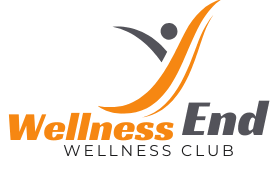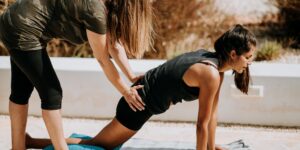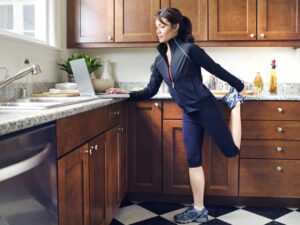With so many choices claiming to be the best for different body types or goals, it can be hard to find the right workout. We all have different bodies, and getting fit isn’t a process that works for everyone. There are easy workouts that can be changed to fit any body type or level of fitness, which is good news. Whether you’re new to exercise, coming back after a break, or just looking for a way to stay active that you can keep up, the key is to pick moves that are appropriate for your level of fitness and your long-term goals.
Know Your Body and Level of Fitness
As with any workout, you should know your present fitness level and body type before you start. Some people naturally have more muscle, others naturally store fat better, and still others naturally don’t gain weight. Your limits aren’t set by these traits; they just point you in the direction of routines that are more fun and effective. For example, someone with a bigger frame might benefit from moves that are easier on the joints, while someone with a slimmer build might look for strength-based workouts to tone up. Simple workouts can be changed to fit your body’s needs, no matter where you start.
Why keeping things simple is important in exercise
Beginners or people who don’t have much time may be scared off by complicated routines with lots of steps and big tools. That’s why simple workouts are so effective: they cut down on friction and make you more consistent. You can start moving even if you don’t have a gym ticket or any fancy gear. Walking, stretching, standing squats, and light strength training are all simple workouts that can help you in big ways if you do them regularly. You should move your body in ways that make you feel good, not to please other people or meet impossible standards.
Walking is a great way to get in shape
Walking is one of the easiest workouts that anyone can do, no matter what their fitness level or body type is. It’s easy on the joints, doesn’t need any tools, and can be done almost anywhere. To begin, you can do it for just ten minutes a day. As your fitness grows, you can add more time. For those who want a more intense workout, you can make an easy walk more difficult by going faster, uphill, or with light weights. Walking is also good for your emotional health, your breathing, and your weight.
Strength and mobility exercises you can do with your own body
Doing push-ups, squats, lunges, splits, and glute bridges with your own body weight is a great way to work out your whole body without any tools. You can change these exercises to fit your level of fitness. To start, people can do wall push-ups instead of floor push-ups or limit how far they can bend until they get stronger and more flexible. You can make it harder by changing the number of reps, sets, or time as you get stronger. These basic moves help you get stronger, stand up straighter, and move around more easily in everyday life.
All Bodies Can Stretch and Be Flexible
Everyone, no matter what their exercise goals are, needs to stretch. Muscles and joints that are too tight can cause pain, bad posture, and even damage over time. Gentle stretching can make you more flexible, help you relax, and make it easier to do everyday things. Stretching for five to ten minutes in the morning or evening can make a big difference in how your body feels. Forward folds, side stretches, shoulder rolls, and spine twists are easy for beginners to do and can be done sitting or standing.
Choices for low-impact cardio
Some people don’t like doing high-impact activities like running or jumping. Low-impact exercise is best for people who have problems with their joints, have bigger bodies, or have trouble moving around. Some of these are swimming, dancing, riding, and low-intensity exercises. These sports get your heart rate up and are good for your heart without putting too much stress on your knees or feet. Figure out something you like to do that you can do every day, even if it’s only for 15 to 20 minutes at first.
Yoga and moving with awareness
Yoga is great for people of all ages and shapes. It makes the body stronger, boosts balance, and is good for the mind. There are different types of yoga, ranging from slow and soft to strong and hard. Child’s pose, cat-cow bends, downward dog, and easy turns are good places for beginners to start. Yoga can help you become more flexible, feel less stressed, and connect your body and mind more deeply over time. It’s not about getting the right pose; it’s about being there and paying attention to your body.
Light weights and resistance bands
Adding light pressure to your workout can help you get stronger and tone your muscles without putting too much stress on your joints. Resistance bands are cheap, simple to use, and great for people of all exercise levels. You can decide how hard each action is and work out more than one group of muscles at once. Simple strength workouts like arm curls, shoulder pushes, and leg lifts can also be done with light tools or everyday items like water bottles. Resistance training speeds up your metabolism, protects your bones, and helps you keep your muscle mass as you get older.
Rest and recovery as a way to stay fit
A smart workout plan includes time to heal and rest. If you work too much or push your body too hard, you could hurt yourself or get burned out. To have a better and more balanced exercise journey, pay attention to your body, take breaks when you need to, and make sure you get enough sleep. Light exercise, like walks or stretching, can still be done on recovery days. This helps the body heal and blood flow. Resting is not being lazy; it’s an important part of getting stronger and more durable over time.
Setting up workouts that work with your schedule
You should only work out if you can keep it up. In the beginning, consistency is more important than energy. It’s enough to do something for ten minutes a day to make it a routine. You can dance your way to health if you like dancing more than other types of exercise. The goal is to make a plan that works with your schedule, meets your body’s needs, and inspires you to keep going. Not the other way around, your workouts should help you.
Getting more confident by moving around
Working out isn’t just for looks; it also makes you feel better. Moving around every day can help you feel better about yourself, give you more energy, and lift your mood. As your strength, flexibility, or endurance get better, you’ll have a better understanding of what your body can do. This confidence helps you feel more capable, focused, and in control in other parts of your life as well. Being fit is a sign of self-respect, and moving around regularly is one of the best things you can do for yourself.
Accept progress, not perfection
There is no one way to get fit. If you compare yourself to others or try to be great, it can stop you from being motivated. Don’t worry about how little your growth is. Have you moved yet? Did you stretch longer today than you did yesterday? You might not have been sure you could do the new workout. These wins are important. Remember that getting fit is a process that lasts a lifetime, not a quick fix. You can make a habit that helps your body and your health if you give it time, care, and kindness.




